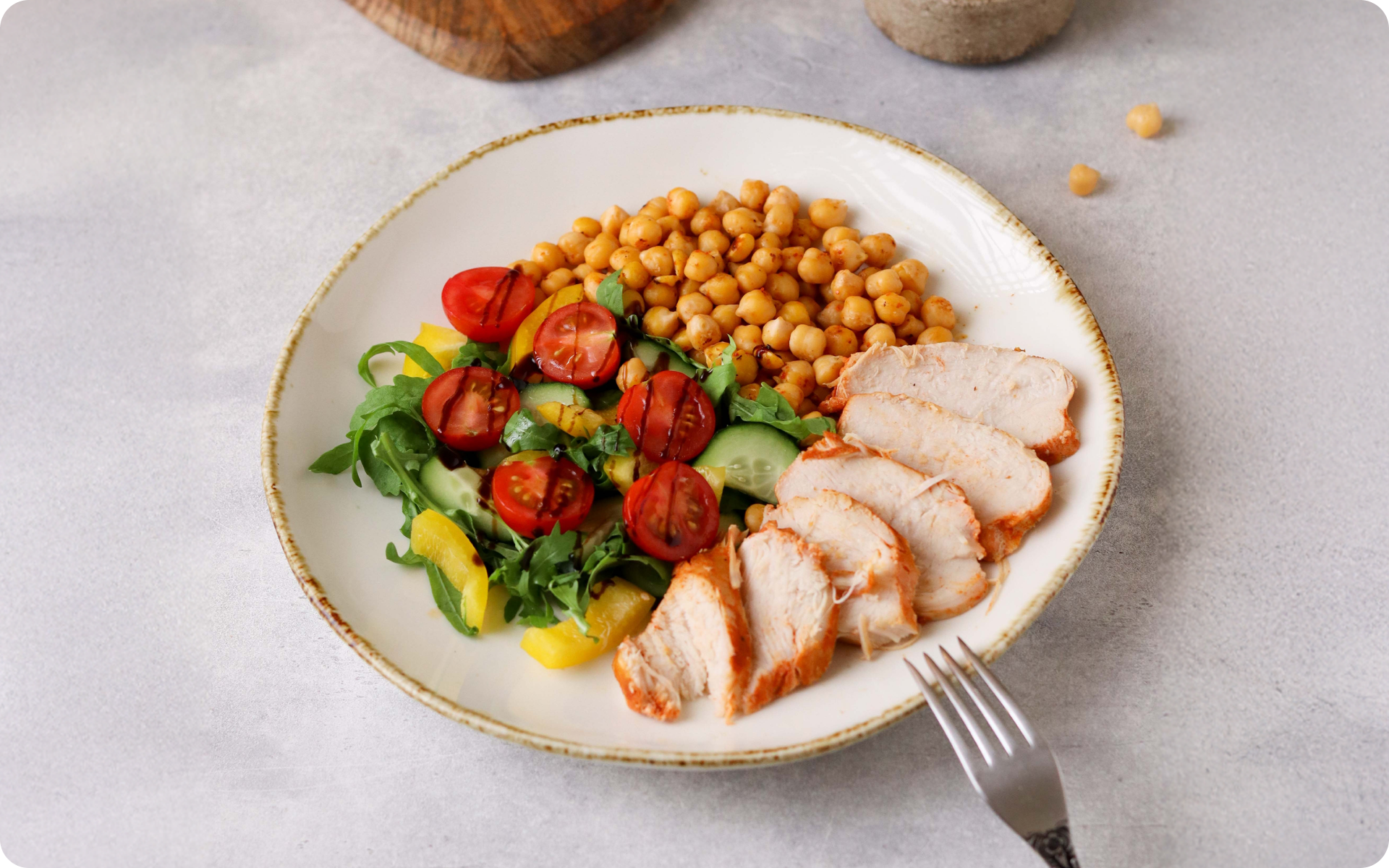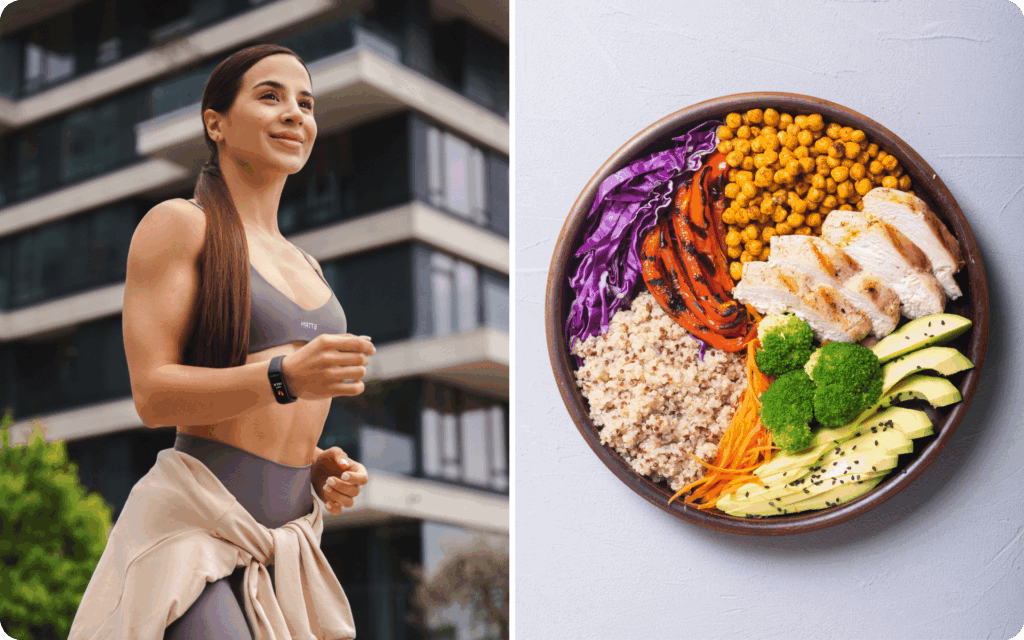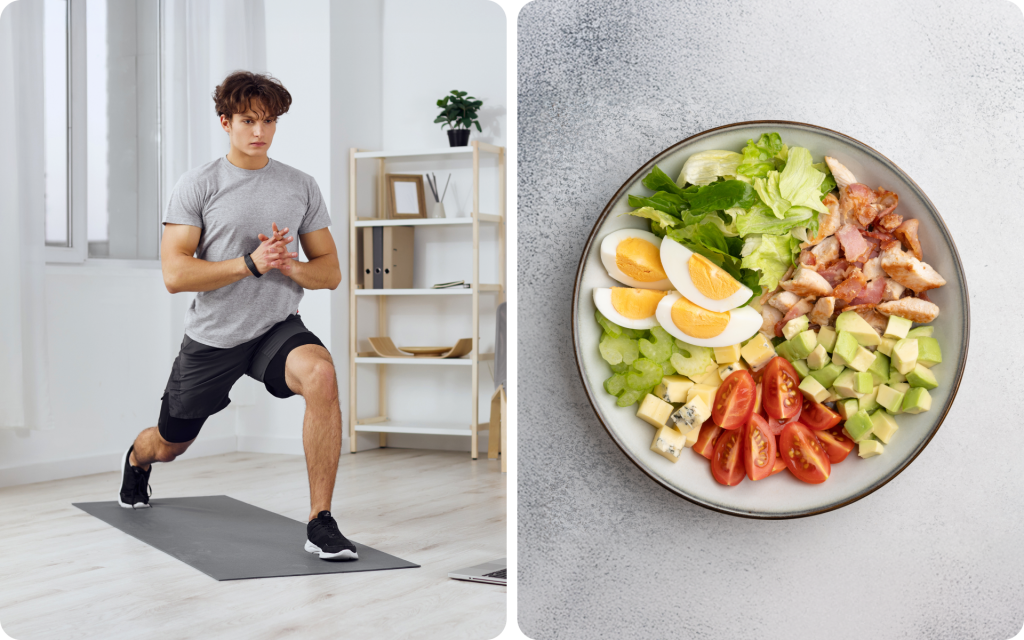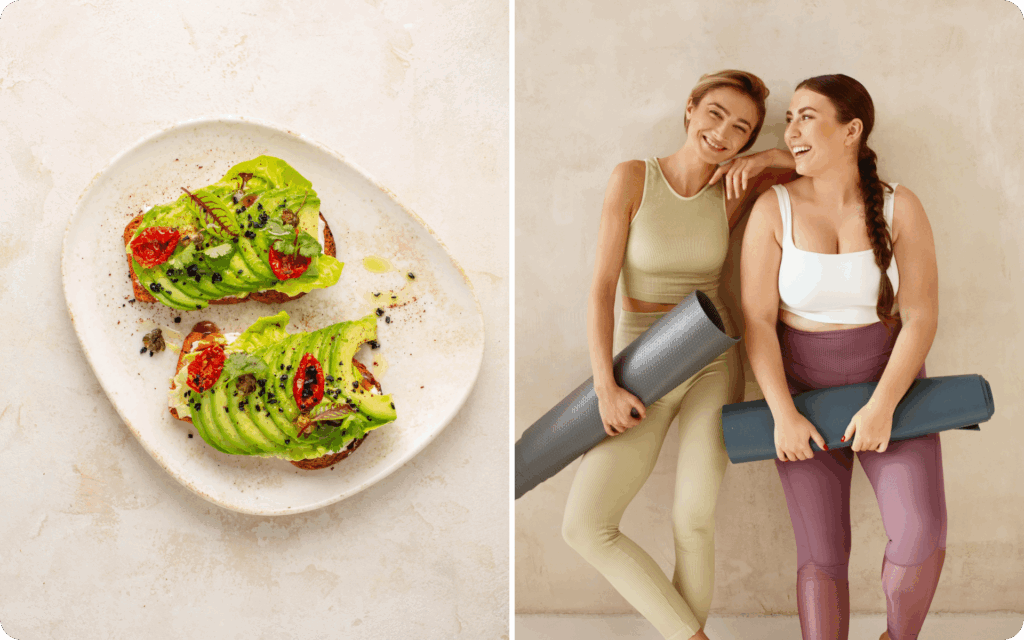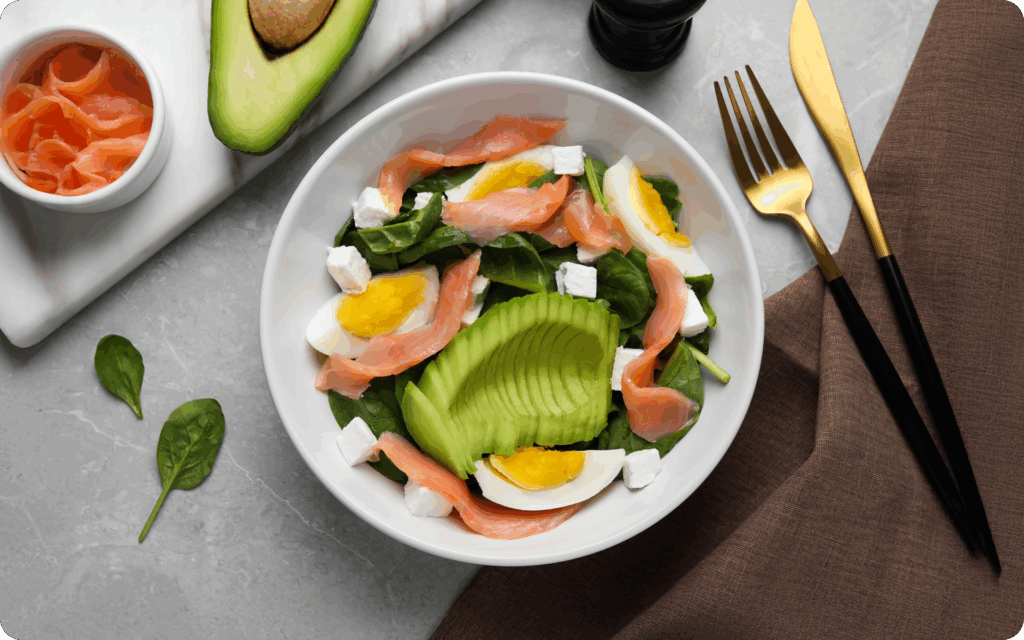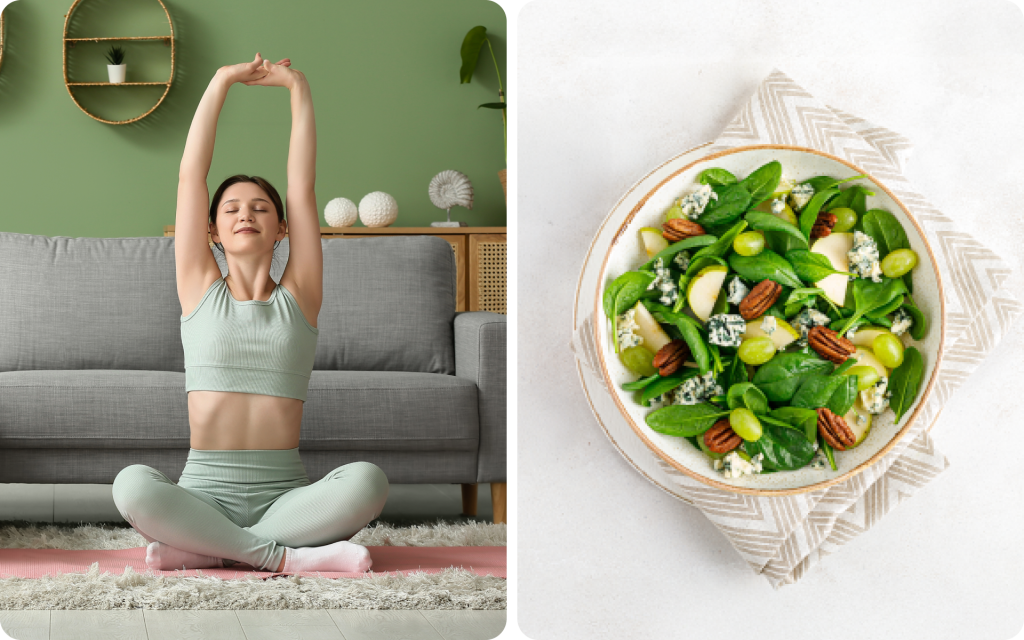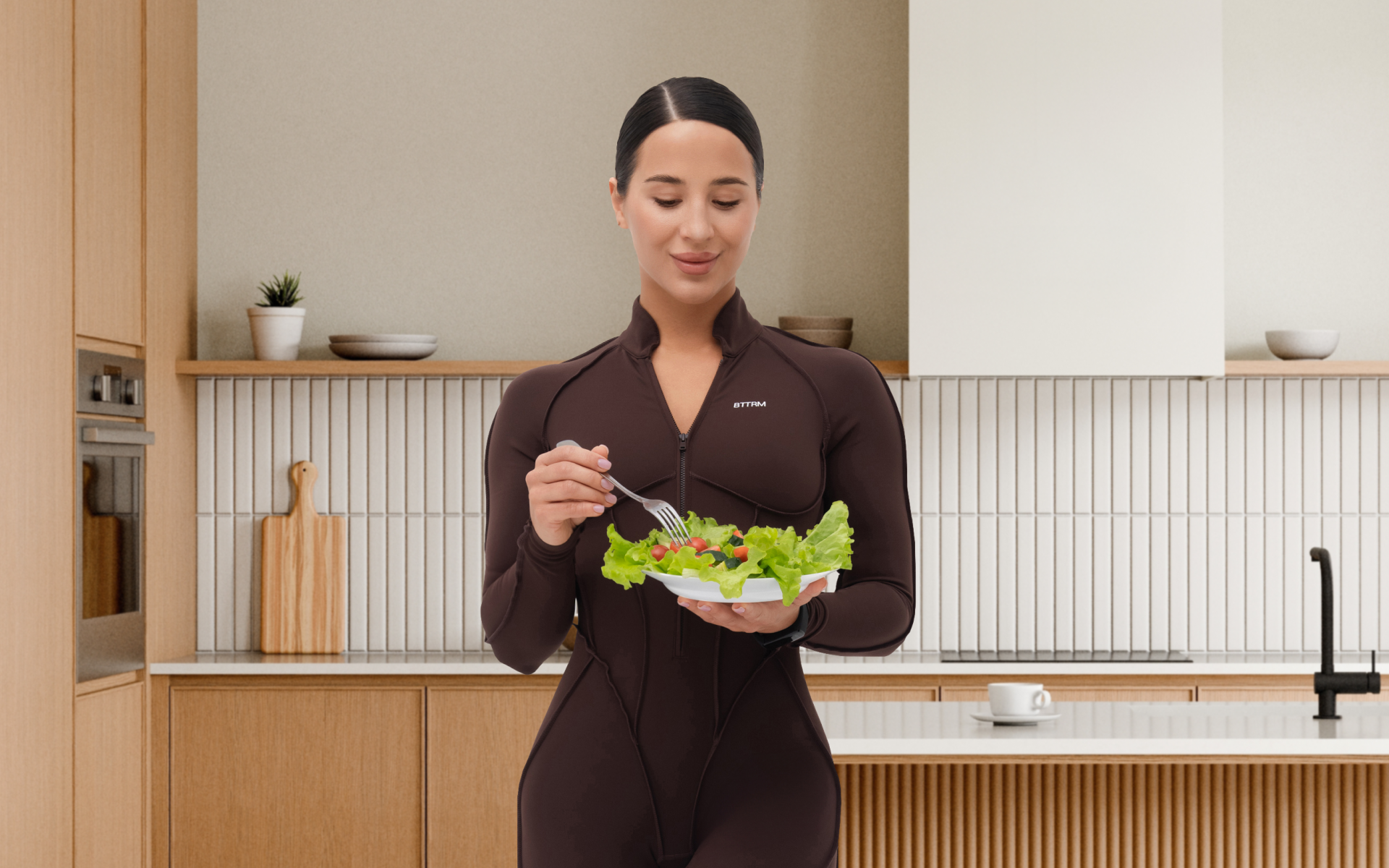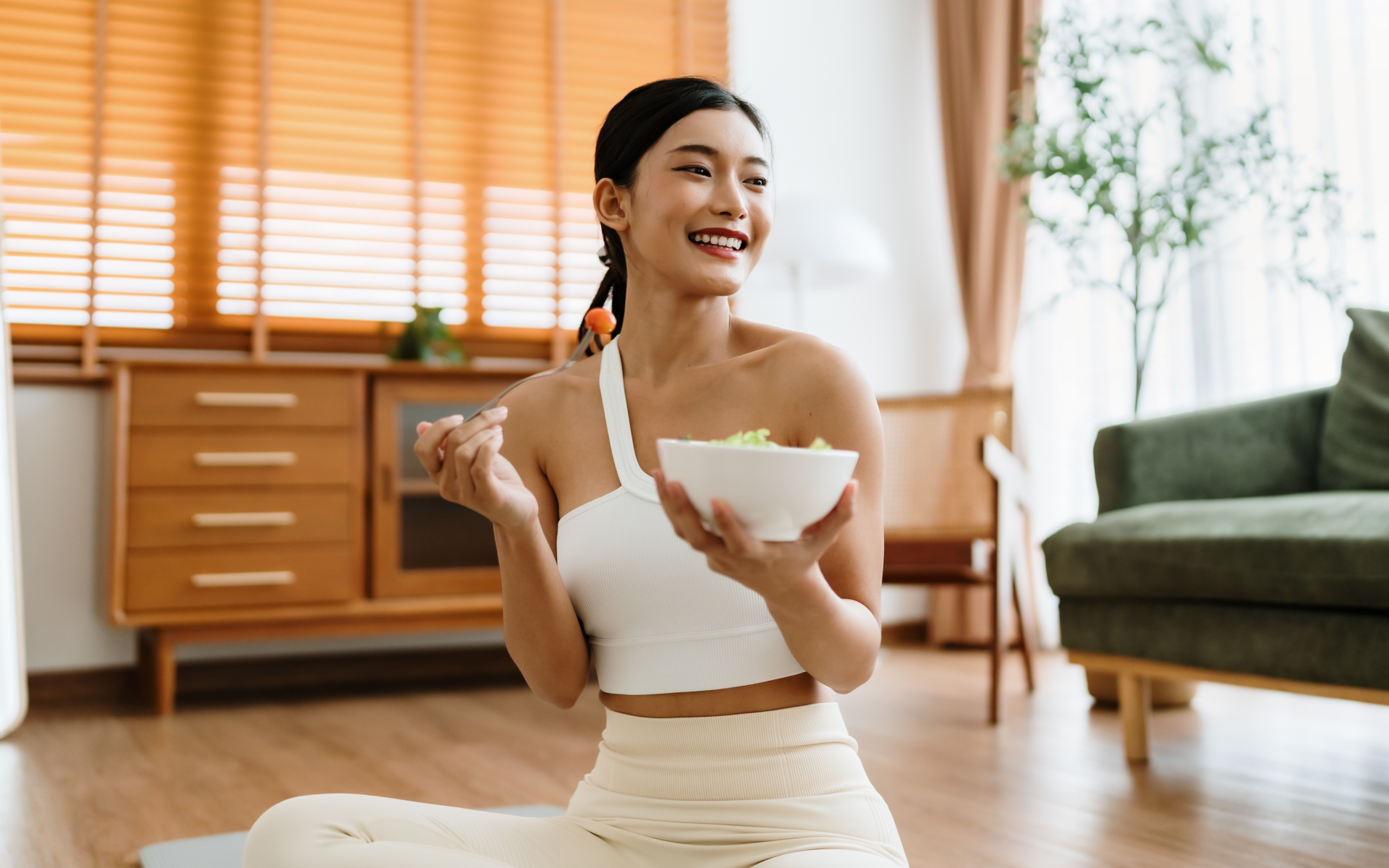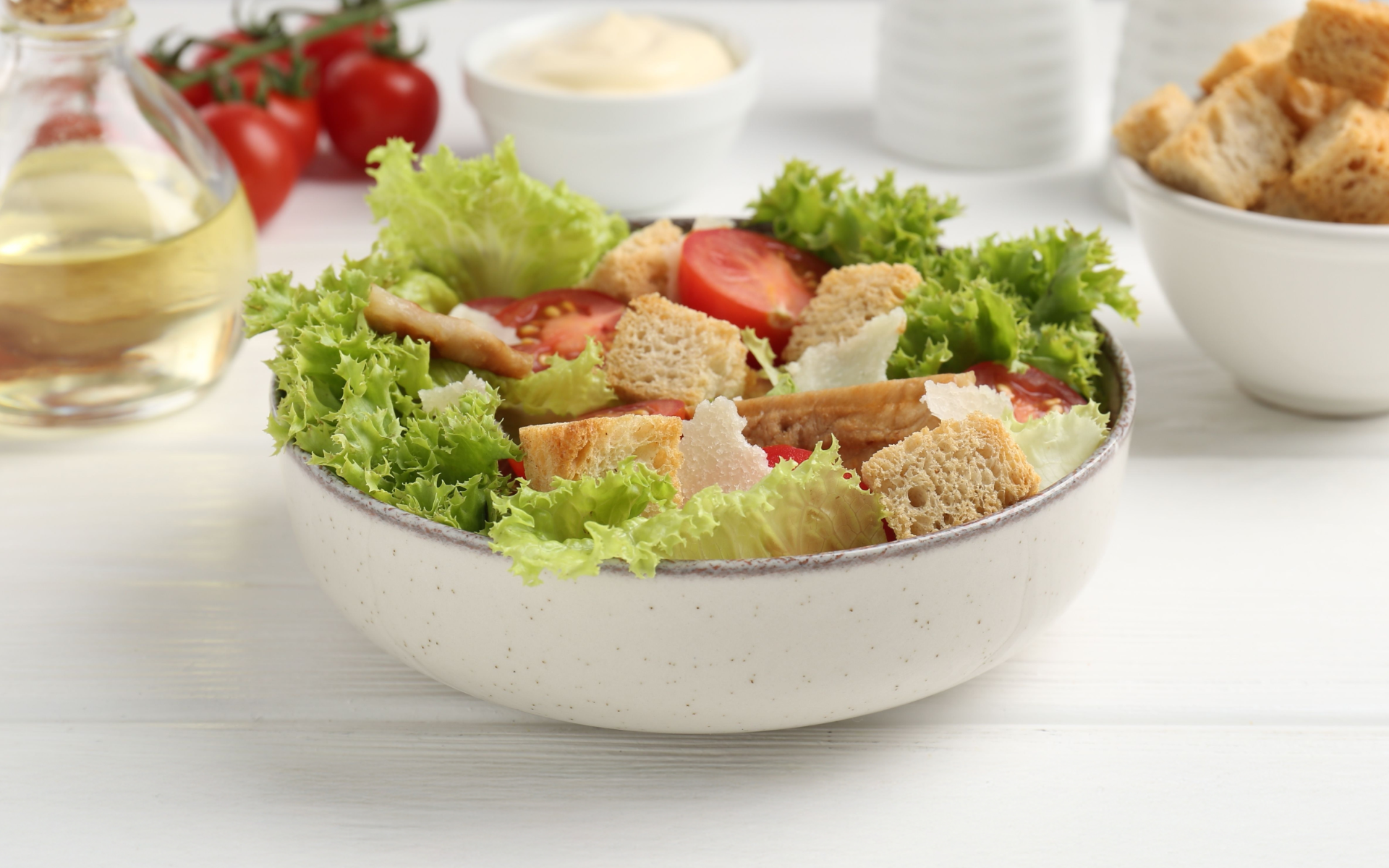Achieving muscle gain is a common aspiration of many fitness enthusiasts, but knowing how to fuel that growth could be challenging. One approach that has gained attention is the 3,500-calorie meal plan. The question that many people ask is: What is a 3,500-calorie meal plan for gaining muscle mass?
Essentially, this plan is a dietary guideline designed to help you consume 3,500 calories a day, specifically aimed at promoting weight gain with a focus on muscle growth. However, it’s not just about eating any type of food; the quality of the food is essential.
An effective plan must focus on nutritious and balanced options, which means that simply stuffing yourself with high-calorie foods isn’t enough. The goal is to gain weight in a healthy and sustainable manner, relying on foods that provide the necessary nutrients for your workouts.
So, who really needs a 3,500-calorie meal plan? What is the ideal macronutrient ratio in such a plan? How are meals structured throughout the day? In this article, we’ll answer these questions and more to help you understand how to structure a meal plan that works for you. You may just find the key to achieving your muscle mass goals!
Who Needs a 3,500-Calorie Meal Plan?
A 3,500-calorie meal plan may seem like a big challenge, but it’s important to remember that caloric requirements vary significantly from person to person. Dietary needs are unique and personalized, depending on various factors such as age, sex, height, current weight, level of physical activity, and individual metabolism (1).
Some people, particularly those with active lifestyles or specific goals, may benefit from this approach. Below, we’ll explore who these groups are that could take advantage of a 3,500-calorie plan.
- Athletes and Highly Active Individuals
Athletes and those who engage in intense physical activities (such as weightlifting and endurance sports) typically have much higher caloric requirements to maintain their performance and facilitate recovery. For them, a 3,500-calorie plan could be essential for helping them develop and maintain muscle mass, but it will depend on their individual energy needs, which are also influenced by body size and other factors (2).
- Those Who Are Seeking Significant Muscle Gain
If your goal is to significantly increase your muscle mass, a 3,500-calorie meal plan may be just what you need. This type of eating could help achieve a positive caloric balance, which is essential for muscle development, particularly when combined with a suitable exercise routine. Again, it also depends on body size and other factors. Some people may require fewer calories to gain muscle.
- Individuals in Bulking Phases
Those who are in a “bulking” phase, such as bodybuilders, may also find a plan of this nature useful. During this phase, the focus is on increasing caloric intake to maximize muscle growth, which could require a high caloric consumption (3). For more details about high-calorie foods for bulking, take a look at our prior publication.
BetterMe: Health Coaching app helps you achieve your body goals with ease and efficiency by helping to choose proper meal plans and effective workouts. Start using our app and you will see good results in a short time.
- Individuals with Physically Demanding Jobs
People who perform physically demanding jobs, such as construction workers or field workers, may need more calories to maintain their energy levels.
- Individuals with High Metabolic Requirements
This could include those with certain medical or metabolic conditions that burn energy more quickly (4).
- Individuals Who Are Pregnant or Lactating
During pregnancy or lactation, women require a higher caloric intake to meet the nutritional needs of their bodies and support the development of their babies (5). Some pregnant or lactating women who are highly active and/or have larger body sizes may require as much as 3,500 calories, but this certainly isn’t necessary for all pregnant/lactating women. Individual needs vary.
The question is not so much “Who needs a 3,500-calorie meal plan?” but “How many calories do I need?” And here’s the key point: the best course of action is to consult a registered dietitian. They are professionals who are trained to evaluate your specific needs and design a dietary plan that is healthy, sustainable, and helps you achieve your goals safely.
Read more: Meal Plan for Bulk: Macro Split, Meal Timing, and All You Need to Know
What’s the Ideal Macro Split for a 3,500-Calorie Meal Plan?
First, let’s take a quick look at what macronutrients are. They are the essential components of your diet and are divided into three key groups: carbohydrates, proteins, and fats. Each one has a fundamental role in the body’s functioning and in your health and fitness goals.
Carbohydrates: They are the primary source of energy for the body. They can be divided into three types: sugars, starches, and fiber. Sugars and most starches are broken down into glucose, which is used for energy, while fiber is not digested and helps with digestion (6).
Proteins: Proteins are essential for building and repairing tissues. They are also essential for the production of hormones and enzymes. This is particularly important for those who want to gain muscle mass (7).
Fats: Fats are essential for several functions, including the absorption of vitamins and the supply of energy. Although they are often feared, healthy fats are necessary for the optimal functioning of the body (8).
For eating 3,500 calories a day, establishing an appropriate distribution of macronutrients, which has a relatively high protein content, could support your goal of gaining muscle. An effective distribution may be as follows:
- Carbohydrates: 45%
- Proteins: 30%
- Fats: 25%
Now let’s break down the calculations for 3,500 calories according to this distribution:
Carbohydrates: 45% of 3,500 calories equals 1,575 calories, which translates to 394 grams (1 gram = 4 kcal) (9).
Proteins: 30% of 3,500 calories equals 1,050 calories, translating to 263 grams (1 gram = 4 kcal) (9).
Fats: 25% of 3,500 calories equals 875 calories, which equates to about 97 grams (1 gram = 9 kcal) (9).
This is just one example. You can tweak this distribution according to what works best for you. General guidelines recommend 45-65% energy from carbohydrates, 10-35% from protein, and 20-35% from fats.
Beyond the quantity, the quality of the foods you choose matters. It’s essential that this 3,500-calorie plan is healthy and aligned with your goals, particularly if you’re looking to gain muscle mass. The quality of the macronutrients you consume could make a significant difference to your health and results.
Next, we’ll discuss how to prepare healthy meals within a 3,500-kcal plan, what foods you should choose from each group, and how to distribute them throughout the day to maximize your results and well-being.
How Do You Meal Prep for 3,500 Calories Healthily?
When creating a 3,500-calorie meal plan, it’s important to pay attention to the quality of the foods you choose. It’s not just about filling your plate but about selecting foods that nourish your body and make you feel good. Here are some tips on what to choose and what to avoid to maintain a balanced and nutritious diet:
Carbohydrates
Choose: Vegetables, fruits, oats, brown rice, quinoa, legumes (such as lentils and chickpeas), whole-wheat products, and potatoes.
Avoid: White bread, pastries, cookies, sweets, sugary beverages, processed juices, and sugary cereals.
Our previous post goes into great detail about the high-calorie low-carb foods.
Proteins
Choose: Lean meats (such as chicken and turkey), fish (such as salmon, tuna, and sardines), eggs, legumes (such as beans and lentils), tofu, and low-fat dairy products (such as yogurt and cheese).
Avoid: Processed meats (such as sausages and deli meats), fried proteins (such as breaded chicken), and excessive full-fat dairy products.
Fats
Choose: Nuts (such as almonds, walnuts, and hazelnuts), seeds (such as chia and flaxseeds), avocado, extra virgin olive oil, other vegetable oils, and fatty fish (such as salmon).
Avoid: Excessive saturated fats from fatty meats, butter, ghee, coconut oil, etc. Also avoid artificial trans fats that may still be found in ultra-processed foods in countries that haven’t banned them.
General Tips
- Planning: Spend time planning your meals to ensure you include a good variety of foods.
- Healthy Cooking: Prefer methods such as roasting, baking, or steaming to preserve the nutritional value of the foods.
- Diversity: Maintain a diversity of options in your diet to ensure you get all the necessary nutrients.
Remember that it’s not just about reaching your calorie goal, it’s also about making sure every bite counts. The quality of the foods you choose directly impacts your energy, well-being, and long-term health.
How Do You Structure Meals in a 3,500-Calorie Day?
It’s possible to plan a healthy and delicious day that helps you reach your calorie goals and also provides you with the right nutrition. Below, we present a way to distribute these calories throughout the day.
Keep reading to see an example of a simple 3,500-calorie meal plan for a day with this caloric distribution and learn how you could prioritize the quality of your food!
Breakfast: 900 calories – This meal is essential for starting the day with energy. It should include a good combination of carbohydrates, proteins, and healthy fats.
Mid-Morning Snack: 500 calories – This snack should help maintain your energy levels until lunchtime by adding some extra calories and nutrients.
BetterMe is your fast-track ticket to long-lasting weight loss! Tailor your fitness journey and maximize your results with just a couple of swipes!
Lunch: 1,000 calories – A complete meal that should include lean proteins, complex carbohydrates, and plenty of vegetables. It’s the perfect time to create a well-balanced plate.
Afternoon Snack: 400 calories – Here, you could include a light energy boost that will help keep you active and focused.
Dinner: 700 calories – Similar to lunch, make sure to include a variety of foods that provide essential nutrients.
What’s a Simple 7-Day 3,500-Calorie Meal Plan?
Based on the distribution of kcal in the meals, here’s a simple example of a 3,500-kcal meal plan. This plan is designed to provide a variety of nutritious foods that will meet your caloric goals and give you the essential nutrients your body needs to function optimally.
When planning your meals, it’s important to ensure each one is balanced and contains a good mix of carbohydrates, proteins, and healthy fats. This approach will help you meet your energy requirements and keep you full and satisfied throughout the day.
Example Meal Plan for 3,500 Calories
Breakfast: Oatmeal bowl – 900 calories
- Rolled oats (1 cup cooked): 150 calories
- Skim milk (1 cup): 90 calories
- Banana (1 medium): 105 calories
- Almond butter (2 tablespoons): 200 calories
- Chia seeds (2 tablespoons): 120 calories
- Honey (1 tablespoon): 64 calories
- Chopped walnuts (1 oz): 170 calories
Morning Snack: Avocado toast – 500 calories
- Whole-grain bread (2 slices): 200 calories
- Avocado (1 medium): 160 calories
- Hard-boiled eggs (2 large): 140 calories
- Tomato (1 medium): 25 calories
- Sesame seeds (1 tablespoon): 25 calories
Lunch: Chicken and quinoa bowl – 1000 calories
- Grilled chicken breast (6 oz): 300 calories
- Cooked quinoa (1 cup): 220 calories
- Black beans (1/2 cup): 120 calories
- Roasted peppers (1 cup): 50 calories
- Cooked spinach (1 cup): 70 calories
- Olive oil (1 tablespoon): 120 calories
- Guacamole (1/4 cup): 100 calories
Afternoon Snack: Yogurt with berries – 400 calories
- Low-fat Greek yogurt (1 cup): 100 calories
- Granola (1/3 cup): 100 calories
- Blueberries (1/2 cup): 40 calories
- Almonds (0.5 oz or approximately 14 grams): 70 calories
- Chia seeds (1 tablespoon): 60 calories
- Sunflower seeds (1/2 oz or approximately 14 grams): 30 calories
Dinner: Baked salmon – 700 calories
- Baked salmon (4 oz): 300 calories
- Mashed potatoes (1 cup): 250 calories
- Sautéed spinach (1 cup): 35 calories
- Olive oil (1 tablespoon for cooking): 120 calories
Read more: Hitting 25 Grams of Fiber: Daily Guide, High-Fiber Foods, and Smart Snacking
What Are Common High-Calorie Diet Mistakes?
As we’ve seen, following a hypercaloric diet could be key to gaining weight in a healthy way. However, it’s not as simple as just consuming more calories. Many people make mistakes that could sabotage their efforts. Below are the most common mistakes in these diets and how you can avoid them.
- Focusing on Empty Calories
When the only concern is consuming a specific number of calories, it’s easy to fall into the trap of ultra-processed foods. It’s important to remember that not all calories are created equal. Choose more whole, nutritious foods to keep your energy levels up and your health balanced.
- Ignoring Macronutrients
It’s not only important how many calories you consume, but also how they are distributed among carbohydrates, proteins, and fats, as discussed earlier in this article. Make sure your diet includes an appropriate combination of macronutrients.
- Not Planning Meals
A lack of planning could lead to spontaneous food choices that aren’t always the best. Take time to plan your meals and snacks to ensure you meet your caloric and nutritional goals. Having a plan also makes it easier to resist the temptation of fast food.
- Forgetting Hydration
Sometimes, by focusing on consuming the necessary calories, you may neglect your fluid intake. Hydration is essential, particularly if you’re increasing your physical activity. Make sure to drink enough water to keep your body functioning optimally.
- Not Listening to Your Body
One of the keys to success in any diet is to listen to the signals your body sends you. Ignoring feelings of hunger and fullness could lead to overeating. Maintaining a conscious connection with your eating habits will help you establish a healthier relationship with food.
- Lack of Variety in Your Diet
Vary your diet to make sure you’re getting all the necessary nutrients. Don’t be afraid to experiment with new recipes and ingredients.
- Not Monitoring Your Progress
If you don’t track your caloric intake and progress, it’s difficult to know if you’re on the right track or if you need to adjust your diet. Consider keeping a record of your meals and how you feel throughout the process. This will allow you to make the necessary changes to keep moving forward.
3,500 calories could be too much for inactive individuals. Most sedentary adults need between 1,800 and 2,200 calories per day, so consuming 3,500 calories may lead to weight gain unless it’s balanced with physical activity (10). Always consult a healthcare professional to determine your specific caloric needs. If you’re curious about high-calorie recipes for weight gain, check out our earlier article. That depends on your goals. If you’re trying to gain weight or muscle, you may still aim for 3,500 calories on rest days. However, if your activity level decreases significantly, adjusting your intake could help you avoid unwanted or excess weight gain. Some easy high-calorie breakfasts include: To prevent feeling too full, try:Frequently Asked Questions
Is 3,500 calories too much for inactive people?
Should you eat 3,500 calories on rest days?
What are easy high-calorie breakfasts?
How do you prevent feeling too full?
The Bottom Line
For those who are looking to gain muscle mass, understanding individual caloric needs is essential. These needs could vary significantly based on factors such as age, sex, activity level, and metabolism. Therefore, a 3,500-calorie meal plan may be effective for some but must be adjusted to fit each person.
Furthermore, simply consuming more calories isn’t enough to achieve muscle-building goals. The quality of the foods you choose plays a crucial role in the muscle-building process. Opting for nutrient-dense options such as lean proteins, whole grains, and healthy fats supports muscle growth and provides your body with the building blocks it needs for overall health and well-being.
To maximize your results and ensure you stay on the right track, it’s recommended to consult a registered dietitian. This professional will help you develop a personalized meal plan that meets your caloric needs and ensures you’re consuming a variety of healthy foods.
By combining a focus on both the quantity and quality of food with expert guidance, you’ll be better prepared to achieve your muscle gain objectives safely and effectively, while also ensuring your long-term well-being.
DISCLAIMER:
This article is intended for general informational purposes only and does not serve to address individual circumstances. It is not a substitute for professional advice or help and should not be relied on for making any kind of decision-making. Any action taken as a direct or indirect result of the information in this article is entirely at your own risk and is your sole responsibility.
BetterMe, its content staff, and its medical advisors accept no responsibility for inaccuracies, errors, misstatements, inconsistencies, or omissions and specifically disclaim any liability, loss or risk, personal, professional or otherwise, which may be incurred as a consequence, directly or indirectly, of the use and/or application of any content.
You should always seek the advice of your physician or other qualified health provider with any questions you may have regarding a medical condition or your specific situation. Never disregard professional medical advice or delay seeking it because of BetterMe content. If you suspect or think you may have a medical emergency, call your doctor.
SOURCES:
- Nutritional Assessment (2025, pubmed.ncbi.nlm.nih.gov)
- Nutritional Recommendations for Physique Athletes (2020, pubmed.ncbi.nlm.nih.gov)
- Nutrition Recommendations for Bodybuilders in the Off-Season: A Narrative Review (2019, pubmed.ncbi.nlm.nih.gov)
- Energy metabolism in health and diseases (2025, nature.com)
- Nutrition Recommendations in Pregnancy and Lactation (2016, pubmed.ncbi.nlm.nih.gov)
- Carbohydrates (2024, medlineplus.gov)
- Protein (n.d., nutritionsource.hsph.harvard.edu)
- Dietary fats explained (2024, medlineplus.gov)
- Carbohydrates, Proteins, and Fats (2024, msdmanuals.com)
- Factors Affecting Energy Expenditure and Requirements (2023, ncbi.nlm.nih.gov)
